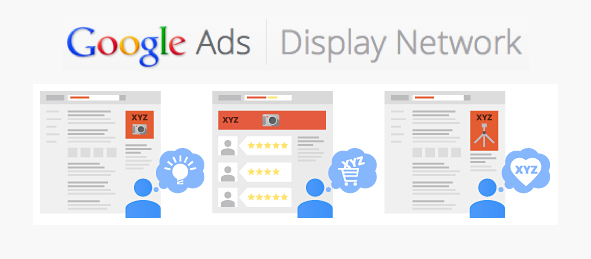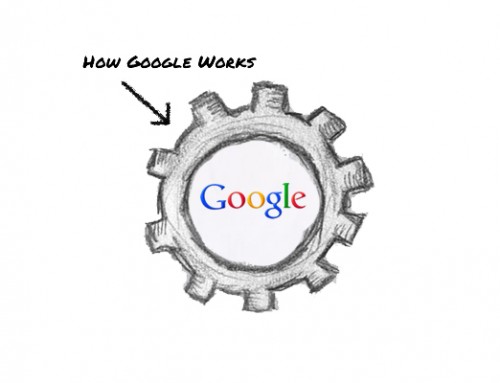Today, I’d like to highlight what could be easily one of the biggest misconceptions in digital marketing. It concerns the use of Google’s Display Network. Many people mistakenly believe that, since the platform is based on the brand awareness display ad model, Google Display Network ads have no place in performance driven media plans. However, my experience has led me to conclude that nothing could be further from the truth.
As a digital marketing professional, I have seen firsthand how well the Display Network can perform – if properly managed.
What is the Google Display Network?
The Google Display Network (GDN) is a web based advertising platform. It is designed to help companies and business owners target customers more effectively, through more relevant web portals. Unlike the search engine ad models that dominate the online landscape, the GDN reaches Internet users while they are browsing through actual websites and content. Google Display Network advertisers are able to reach users through sites such as Gmail, YouTube and millions of other websites, like nytimes.com and weather.com. This is highly noteworthy in and of itself.
However, it doesn’t stop there. The GDN’s reach extends to blogs, buyer guides, customer review pages and more, ultimately reaching ninety percent of Internet users throughout the world.
How Does the Google Display Network Differ From Google Adwords?
Contrary to popular belief, the Google Display Network and search engine ads via Google Adwords are not sibling rivals, in the true sense of the word. While they may occasionally dip into each other’s profit share, it is probably better to think of them as distant cousins. The two platforms provide Internet based advertising, but cater to vastly different marketing approaches.
The Adwords search engine model is centered on the intentional customer. That is to say, Adwords utilizes Internet search engines, such as Google.com, Ask.com and AOL.com, to reach customers who are actively perusing the search engines for a product or service. This search based advertising platform delivers a vast customer base, with users in every stage of the buying cycle. However, it also delivers customers who have done their homework, and know exactly what product or service they are seeking. Adwords tends to work best for businesses that offer easily understood products, with short sales cycles.
In stark contrast, the Google Display Network operates on a more passive level. Similar to traditional billboard advertising, GDN ads are not actively sought out by users. Instead, they are seen and then hibernate in the user’s mind for subsequent recollection and brand identity. However, the Google Display Network takes it one step further, by allowing businesses to individually select relevant websites, content and pages on which to display their ads. The Google Display Network has provided excellent results for businesses that offer more complex products or services, or those that use more involved sales processes.
Three Major Benefits of the Google Display Network
1. Flexibility and Customization
The Google Display Network provides businesses with the utmost flexibility to target customers. The GDN offers a format agnostic advertising structure, which allows businesses to custom create their own ads using text, imagery, video and animations. As well as allowing scope for creativity, the GDN enables businesses to choose where their ads will appear. Also, display ads can be keyword targeted, so ads only appear on websites that already rank for, or publish content around, a given search term. This allows businesses to reach the masses or a niche group – or even both!
2. Less Intrusive and More Trustworthy Advertising
The Google Display Network displays ads alongside content on relevant websites, blogs and forums. Consequently, Internet users are more trusting that what is being advertised may be of value to them. The ad format is far less intrusive than traditional pop up ads and, while the user may not be actively seeking a company’s product or service, they notice the display ads while reading their favorite blogs and web portals. Therefore, the ads benefit from the power of association, because users associate the ads with their favorite web portals.
3. Ability to Retarget Users
 The GDN allows businesses to target vast numbers of users by interest. Also, it allows businesses to retarget or display their ads to users who have already expressed an interest in their brand (as evidenced by prior visits to their website), while they surf other websites! The GDN can identify users who have visited a company’s website, then track their Internet surfing patterns, so the company can remarket its’ message to them again on the other sites they visit.
The GDN allows businesses to target vast numbers of users by interest. Also, it allows businesses to retarget or display their ads to users who have already expressed an interest in their brand (as evidenced by prior visits to their website), while they surf other websites! The GDN can identify users who have visited a company’s website, then track their Internet surfing patterns, so the company can remarket its’ message to them again on the other sites they visit.
The more places you can reach interested users, the better your chances are of making sales and boosting your ROI. The features described above are certainly not available through Adwords’ search engine ads. Furthermore, another factor that makes retargeting so powerful is that it is one of the few channels that is highly effective, for both branding and lead generation campaigns.
Google Display Network – Best of Both Worlds
In summary, the Google Display Network offers unrivaled reach, along with massive performance capabilities – allowing advertisers to tailor their digital advertising campaigns to their audience’s online habits. This is something that offers unique possibilities to advertisers, so it is unfortunate that the GDN has been misunderstood by many in the digital marketing space.
To learn more about the Google Display Network, contact us or call us today at 480-382-7644.




FOLLOW US